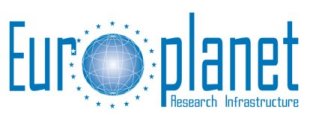TNA1 Planetary Field Analogues offers access to 5 well-characterized terrestrial field sites that have been
selected so as to provide the most realistic analogues of surfaces of Mars, Europa and Titan, to which planetary
missions have either recently been directed or are planned. The five sites are:
Rio Tinto a 100 km long acidic aqueous river environment located in the Huelva province in South West Spain.
Rio Tinto is a unique site in Europe in which a rock-water-biology interaction produces river water with a pH that
averages 2. The site also supports a unique ecosystem making it a desirable site for studying possible habitats for
life on other planetary bodies. The very low pH of the water and production of hydrated mineral precipitation
(jarosite, goethite) represents a distinctive geological environment that will allow assessment of the relative
role of biological and inorganic processes in the production of geology comparable to that found on the surface of
Mars by the Mars Environmental Rover Opportunity (e.g. Jarosite).
Tunisian Chott, located in South West Tunisia is a seasonal lake that is completely dry most of the year. The
surface of the lake is covered with a hard NaCl crust covering underground water. From the astrobiology point of
view it is extremely interesting to examine the biological cycles at such low and salty water levels. Future new
space missions are expected to take advantage of remote testing facilities such as Tunisian Chott El Jerid to fully
validate their instrumentation. This field analogue will be fully characterised using field, geophysical and
microbiological methodology in 2009-2010 so will only be open to access from 2011.
Ny-Ålesund, Svalbard archipelago. Ny-Ålesund is the world's northernmost permanent settlement situated on the
island of Spitsbergen in the Svalbard archipelago, only 1,200 km from the North Pole. It includes areas in front
of two glaciers that are very well suited for testing instruments for ground ice and permafrost mapping. In addition,
there are locations that include large amounts of buried glacier covered by layers of sediments that comprise
mixtures of silicate minerals and organic material. The study area is also within a region of permanent permafrost.
The growing interest in physical conditions of the icy moons of the outer planets and the possibility that they may
host life forms has led to a major increase in the research undertaken on Spitsbergen and access to this site is
therefore highly competitive, in Europlanet access will be provided for a field campaign in 2010.
Ibn Battuta Centre near Marrakech in Morocco is a desert field facility. This extreme environment is used to
test rover, landing systems, instruments dedicated to the Mars exploration and to perform scientific analysis of
Mars analogues. Desert environments in the region provide a wide variety of field analogues including sand dunes,
rocky desert, regoliths, evaporates and other environments and geological and geomorphological features such as
flash flood drainage. Ongoing geological analysis of the region aims to quantitatively understand the origin of
environments such as mud volcanoes, evaporitic deposits, the recent stratigraphy of aeolian sediments and deflation
surfaces that appear remarkable comparable to those reported from Mars. Astrobiology research is also examining
potential habitats and energy sources within ancient mud volcanoes and evaporates with the goal of establishing
how specific endolithic communities and arid bacterial niches function.
The Kamchatka Peninsula in Siberia Russia is one of four regions in the world with extensive geyser activity
allowing a study of the complex inter-relationship between volcanism and landform development, highly relevant
to some planetary bodies, whilst the hot springs are also the habitat of diverse microbiology. The microorganisms
living in these springs survive in extreme conditions both in terms of temperature and water composition (e.g.
highly acidic).The site is therefore both a possible analogue of prebiotic conditions but may form an analogue
to some of the surfaces of Jovian and Saturnian moons (e.g Europa and Titan).The Kamchatka region also offers
Mars analogue terrains and was used in the Soviet/Russian space programme for testing of Mars rovers for Mars-96
mission.


